The Season’s Final Whale Pass Fishing Report
The berries are all gone. Invisible geese honk in the twilight. Nights grow longer. Dead salmon lie along all the waterways. Football is on the tube now, according to reliable reports. Our summer at Whale Pass draws to a conclusion, always a bittersweet time. This is the season’s last report from the Lodge at Whale Pass. I am taking next week off for travel home, recuperation, and repatriation.
I’d like to thank reader Bill Mucklow, who lives on Vancouver Island and sent me the following: “I live on Vancouver Island and do a great deal of fly fishing for salmon, some pinks but we target Coho.
“Early in the year we fish the top of the Island in the Johnson Straight for feeding coho. We use 10 foot Zodiacs and are very successful using Bucktails. This starts mid July and goes until about now.
“I suggest you give bucktails a try. We use Polar Bear for ours plus a combination of Ice Dub Shimmers. We skid them along the surface about 15-20 behind the boat and hang on.
“The process is as follows-
1. Use a floating line with a 6-8 foot leader. Use strong stuff as they hit it really hard. I usually use 15 lb. fluoro.
2. You will troll the buck tail about 20 feet back of the boat…maybe 25…just behind where the prop wash crosses.
3. Speed is fairly fast…about the speed for Sockeye trolling.
4. We put the rod in a holder so you don’t miss the hit/set.
5. All our bucktails represent local baitfish and use a stinger hook.
“The cohos are starting to congregate in the kelp now so we change to 8-wt rods with Deep 7 lines and a baitfish fly. It’s great fun catching 10-15 coho per day in the 8-14 pound category by casting into the kelp.
“Generally the Coho we target will be showing somewhat, even though you see them periodically on the surface they are basically feeding down much deeper.
“We let the fly sink to around 25-30 feet then begin a slow retrieve…1 – 2 – 1- 3 – 2 – 1 short strips. When feeding they will follow a bit then hit the fly hard. Our last trip to the top of the Island were did not have to do any buck tailing. Salmon in the kelp were after baitfish so we were able to do very well casting baitfish flies using a Deep 7 line. A quick drop into the kelp feeding zone about 20-35 feet down and WHAM! The fun is on!”
Thank you for the detailed information, Bill. I hope I get a chance to use it.
The salmon run in the 108 Creek attains epic proportions. For such a small stream it sure hosts a run of fish! Most are pinks, but there are plenty of silvers mixed in, too. Watch for fishing black bears, especially at either end of the day. I still like the four-weight with a small, flashy pink fly for the salmon. For the bears you might need something more stout.

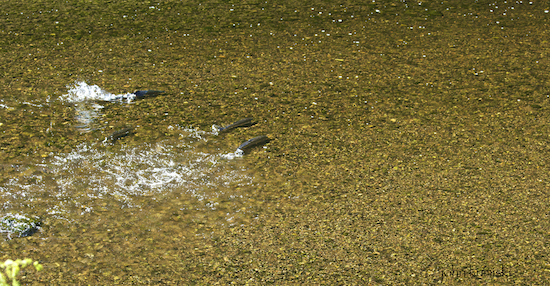
Salmon scoot across shallow water on their way to the spawning grounds.
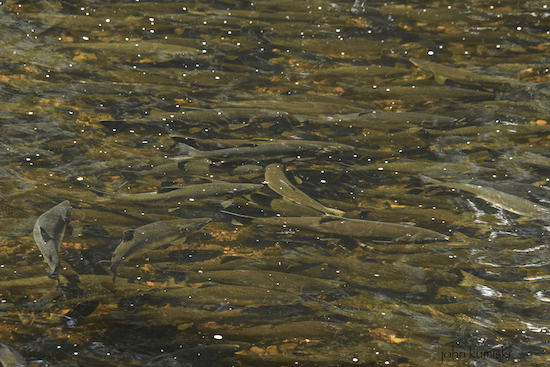
Salmon in a pool in the 108 Creek.
Halibut, cod, and rockfish are still on the bite. While fishing at AnAn, waiting for a party of bear watchers, Alex and I caught on hook and line a couple of dungeness crabs and a couple of large and colorful multi-legged sea stars.
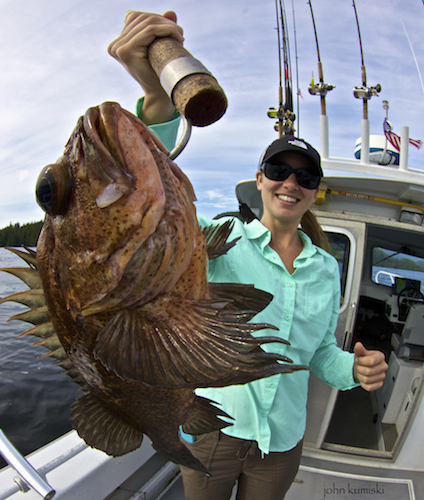
Dana holds a quillback rockfish she pulled up from 150 feet of water.

Not pretty, maybe, but real tasty.
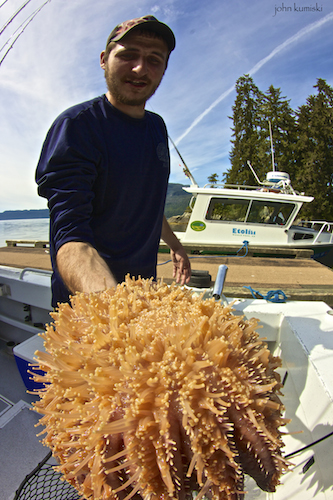
Alex wasn’t crazy about holding this sea star.
I also got to see the LaConte Glacier this week. It is an utterly fantastic place, words fail me. Photos cannot capture the grandeur of it.

The face of the LaConte Glacier.
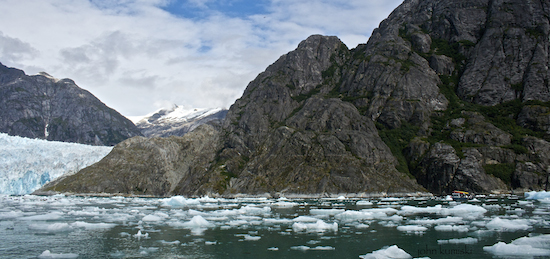
Can you see the Etolin, hidden among the ice?
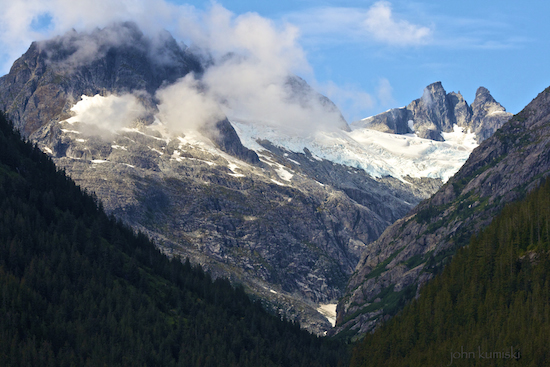
Snows from these high mountains feed the glacier.
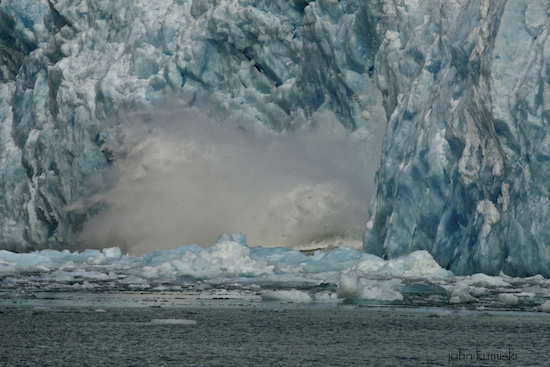
We got to witness a minor calving event. The glacier sounded like a major thunderstorm, booming constantly.
It’s been a good season here, with new experiences, new friends, and a whole lot of new knowledge. I feel very fortunate to have found this place. That having been said, I hope there’s lots of bait off Cape Canaveral when I get there!
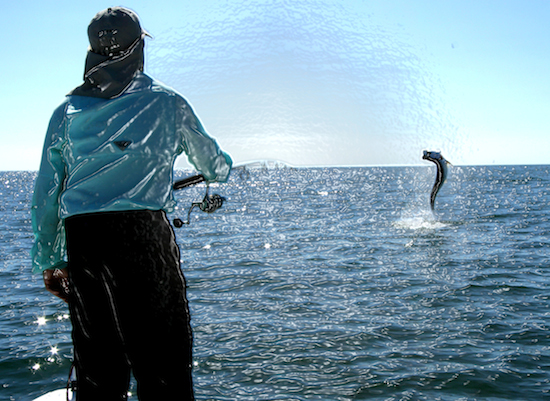
In my fishing fantasies, this is what I will find when I get home.
Needless to say I need some work when I get home. If you’ve been thinking about taking a fishing trip in central Florida, either in the lagoons or along the beaches, please consider calling me. When you’re happy, I’m happy!
And that is this season’s final Whale Pass Fishing Report from the Lodge at Whale Pass.
Life is great and I love my work!
Life is short- Go Fishing!
IT’S MY BYE WEEK NEXT WEEK! Next report on 9/6! Have a fun and safe Labor Day!
John Kumiski
http://www.spottedtail.com
All content in this blog, including writing and photos, copyright John Kumiski 2014. All rights are reserved.
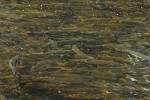
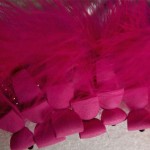
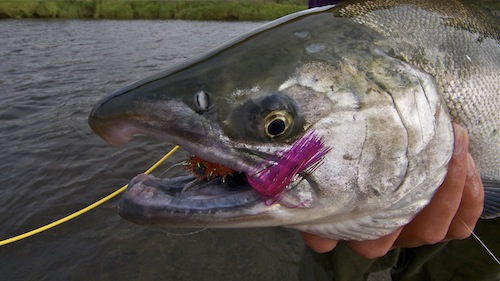
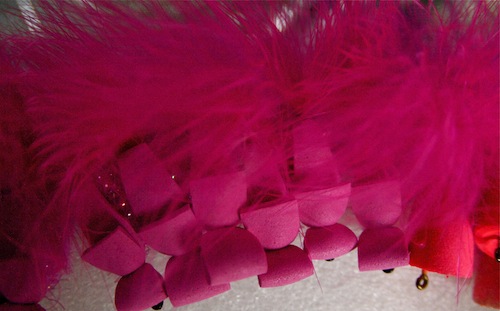
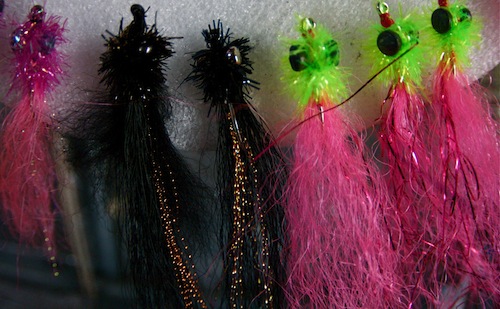
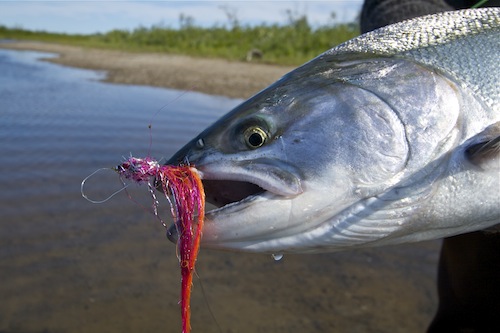
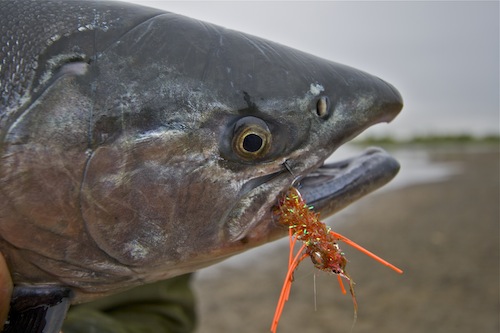
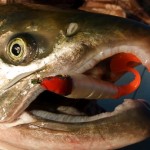
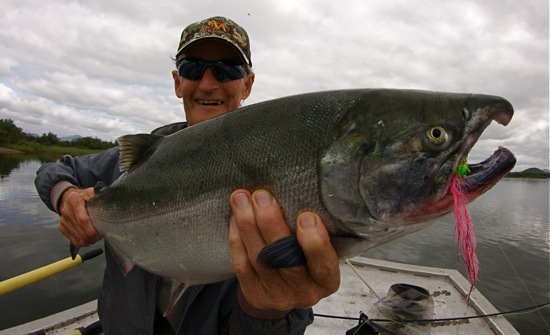
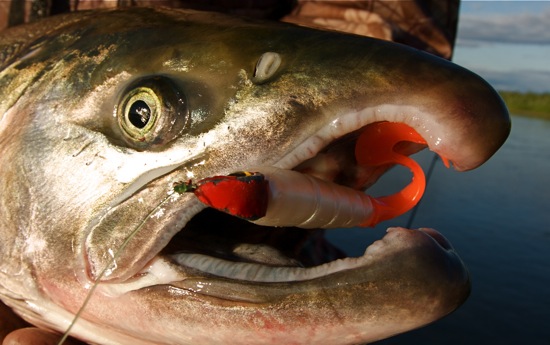
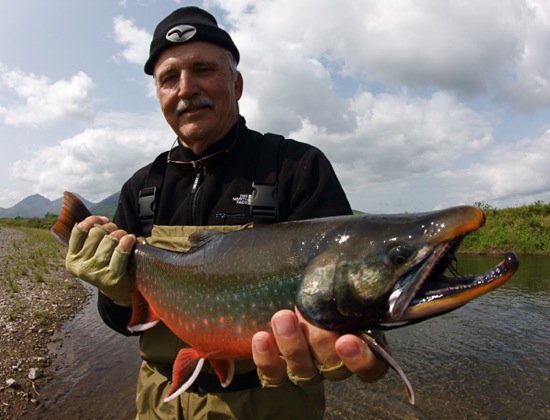
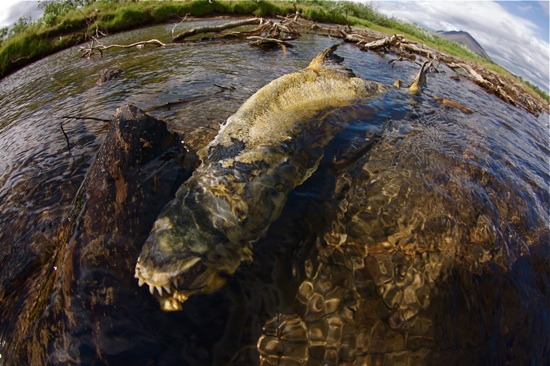
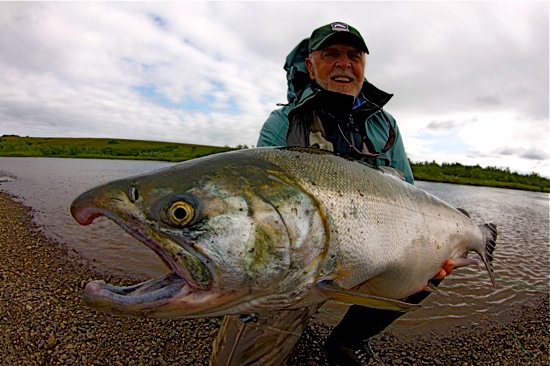
Recent Comments